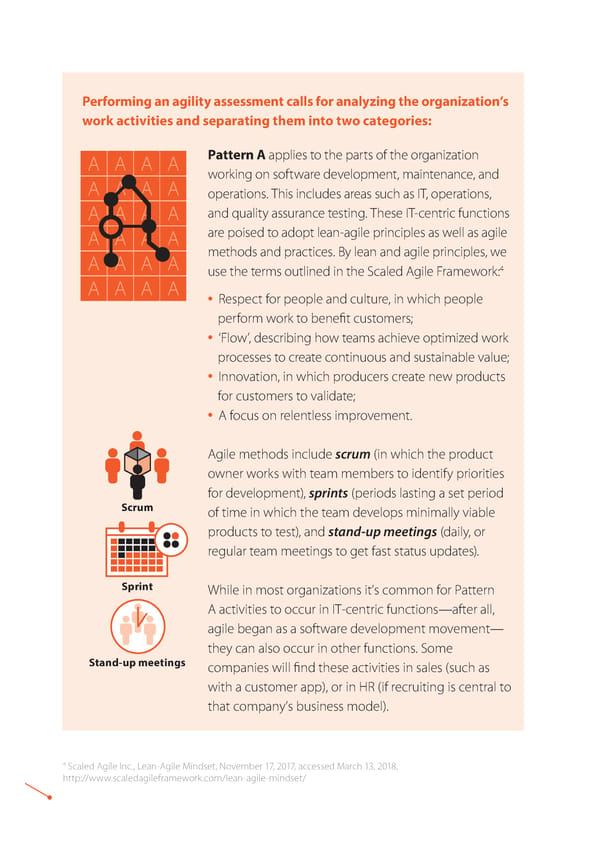Performing an agility assessment calls for analyzing the organization’s work activities and separating them into two categories: AAAA Pattern A applies to the parts of the organization AAAA working on software development, maintenance, and operations. This includes areas such as IT, operations, AAAA and quality assurance testing. These IT-centric functions AAAA are poised to adopt lean-agile principles as well as agile AAAA methods and practices. By lean and agile principles, we 4 use the terms outlined in the Scaled Agile Framework: AAAA € Respect for people and culture, in which people perform work to benefit customers; € ‘Flow’, describing how teams achieve optimized work pr ocesses to create continuous and sustainable value; € Innovation, in which producers create new products for customers to validate; € A focus on relentless improvement. Agile methods include scrum (in which the product owner works with team members to identify priorities for development), sprints (periods lasting a set period Scrum of time in which the team develops minimally viable products to test), and stand-up meetings (daily, or regular team meetings to get fast status updates). Sprint While in most organizations it’s common for Pattern A activities to occur in IT-centric functions—after all, agile began as a software development movement— they can also occur in other functions. Some Stand-up meetings companies will find these activities in sales (such as with a customer app), or in HR (if recruiting is central to that company’s business model). 4 Scaled Agile Inc., Lean-Agile Mindset, November 17, 2017, accessed March 13, 2018, http://www.scaledagileframework.com/lean-agile-mindset/
 The Essence of Agile Page 6 Page 8
The Essence of Agile Page 6 Page 8